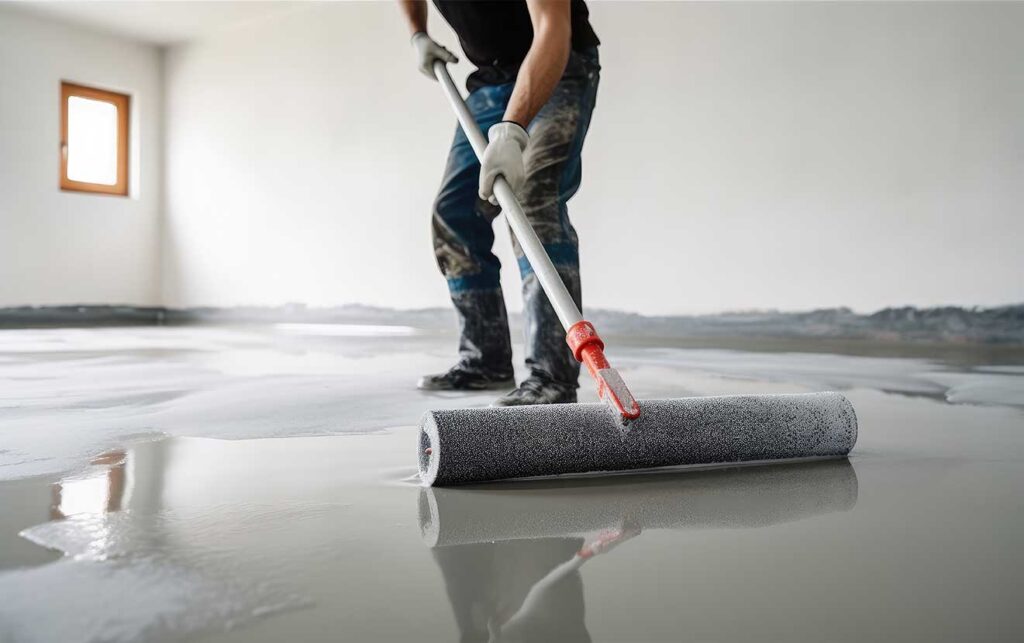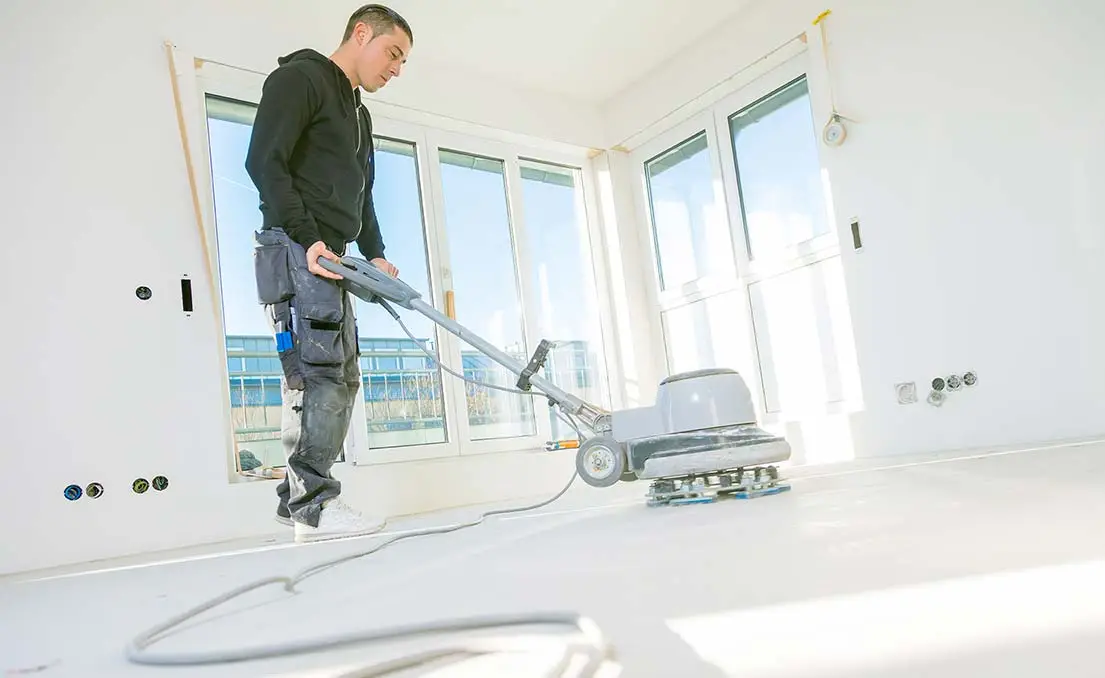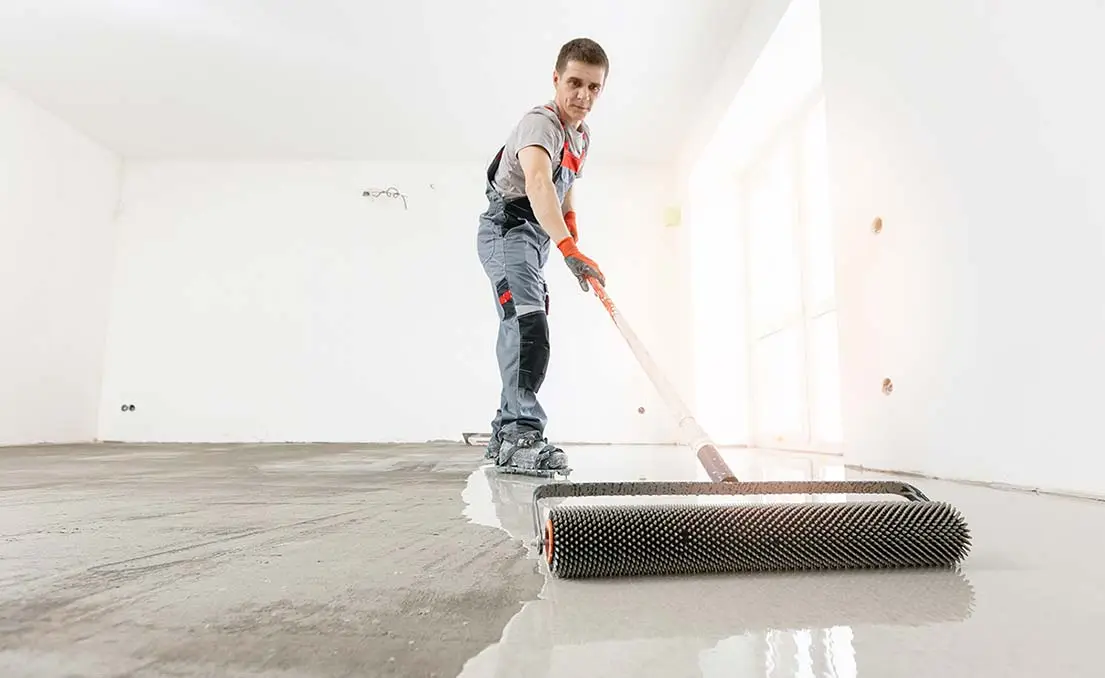
Transforming your garage floor with a coating can not only extend its life but also improve its appearance significantly. Choosing the best garage floor coating might seem daunting with numerous options available.
However, understanding the different types of coatings and their benefits can help you make an informed decision. In this guide, we’ll explore various garage floor coatings, from traditional epoxies to fast-curing polyaspartics, to help you choose the right one for your space.
Understanding the Basics of Garage Floor Coatings
Garage floor coatings serve as protective layers for concrete floors, shielding them from common garage hazards such as chemical spills, heavy foot traffic, and equipment wear. Not only do they offer protection, but they also elevate the aesthetic appeal of the floor, turning a plain concrete slab into a visually pleasing surface.
Among the prevalent options are epoxy, polyaspartic, Polyurea, acrylic sealers, and concrete stains. Polyurea and polyaspartic coatings are celebrated for their robustness and longevity, catering to those seeking a durable solution. In contrast, acrylic sealers and concrete stains are more about enhancing the floor’s natural beauty while offering moderate protection.
These coatings differ in application methods, maintenance requirements, and resistance capabilities, making it essential to weigh each option against your specific needs. Whether you aim for maximum durability or cost-effectiveness, understanding the fundamental properties and benefits of each type of coating is the first step toward selecting the ideal treatment for your garage floor.
Epoxy Coatings – The Traditional Choice
Epoxy coatings stand out for their ease to apply, making them a top selection for DIY enthusiast. This type of coating is a two-component system that hardens into a robust surface capable of withstanding chemical spills, stains, and impacts, thereby offering some decent protection for your garage floor.
Its versatility in color and texture options, including the possibility of integrating decorative flakes, allows for customization to suit any design preference. Despite its benefits, the application of epoxy requires attention to detail, starting with comprehensive floor preparation to ensure optimal adhesion.
The curing process demands patience, as it can extend over several days. For homeowners wanting to save some money this is the preferred choice.
Polyaspartic Coatings – The Fast-Curing Alternative
Polyaspartic coatings are revolutionizing garage floor finishes with their swift curing capabilities. Unlike traditional options that may take days to solidify, polyaspartic coatings dry to the touch in just a few hours and can be fully cured within 24 hours.
This rapid turnaround minimizes the inconvenience of having an out-of-use garage, making it an ideal choice for those needing a quick upgrade. Moreover, their formulation is designed to withstand the harsh conditions of a garage environment, including resistance to oil spills, scratches, and UV light – ensuring the coating doesn’t fade or yellow over time.
Their superior durability and resistance don’t sacrifice aesthetic flexibility; polyaspartic coatings are available in a variety of colors and finishes, allowing for personal customization of your garage space. While they may come at a higher upfront cost compared to other coatings, the long-term benefits and time savings they offer present a compelling case for their consideration in your next garage floor project.
Polyurea Coatings – The New Versatile Coating
Polyurea coatings are increasingly gaining attention for their remarkable combination of flexibility and strength, making them a robust choice for garage floors. This type of coating is renowned for its exceptional chemical resistance, able to fend off oil, gasoline, and other harsh substances that are commonly found in garage environments.
What sets polyurea apart is its elasticity, which allows it to withstand temperature fluctuations and impacts without cracking, a common issue with more rigid coatings. Its quick curing time rivals that of polyaspartic coatings, being ready for use in less than a day, which reduces downtime and quickly returns the garage to operational status. The application process of polyurea coatings can be more technically demanding, often requiring professional installation to ensure a seamless and effective finish.
Despite this, the long-term durability and minimal maintenance requirements of polyurea make it an attractive option for those looking to combine resilience with convenience. Available in various colors and finishes, polyurea coatings offer the flexibility to customize the aesthetic of your garage floor while providing a high level of protection against daily wear and tear.
Acrylic Sealers – The Economical Choice
Acrylic sealers are an appealing option for those who prioritize affordability without sacrificing the visual appeal of their garage floor. This type of coating offers a cost-effective way to protect and enhance the concrete surface, delivering a glossy finish that accentuates the floor’s natural look.
While it may not boast the same level of durability as Polyurea or Polyaspartic options, its ease of application makes it another practical choice for DIY enthusiasts. Acrylic sealers can safeguard the floor against mild environmental factors and light wear, making it suitable for less demanding garage conditions.
Reapplication is straightforward, allowing homeowners to refresh the appearance of their floor as needed without a hefty investment. This coating type strikes a balance between enhancing the aesthetic of the garage floor and providing a basic level of protection, all while keeping expenses to a minimum.
Concrete Stains – For a Natural Aesthetic
Concrete stains set themselves apart by deeply penetrating the concrete, which imbues it with a vibrant, yet translucent hue that accentuates the unique texture and composition of the surface. This method results in a distinctive, mottled appearance that beautifully showcases the inherent qualities of the concrete, offering an organic, earthy feel to the garage space.
Unlike the uniformity of coatings like epoxy or polyaspartic, concrete stains celebrate the natural imperfections and variations of the concrete, creating a one-of-a-kind look for each floor. Although they add a visually appealing dimension to the garage, it’s important to note that concrete stains primarily enhance appearance rather than providing a protective barrier.
For increased protection and to maintain the integrity of the stain, applying a sealer topcoat is advisable. This extra step not only extends the life of the stain but also adds a layer of defense against moisture and stains, bridging the gap between beauty and functionality in floor treatments.
Comparing Cost and Longevity
The decision between different garage floor coatings is not only influenced by their protective and aesthetic benefits but also by their economic and durability factors. Polyurea and polyaspartic options, recognized for their resilience, command a higher initial investment.
However, their extended lifespan, often reaching upwards of 20 years with minimal maintenance, provides considerable long-term value. On the other hand, acrylic sealers and concrete stains present a more budget-friendly upfront cost. These coatings, while enhancing the garage’s visual appeal, necessitate more frequent touch-ups or reapplications, potentially increasing the overall expense over time.
Homeowners must evaluate their specific usage demands and financial constraints to determine which coating aligns with their long-term garage flooring goals. This strategic consideration ensures the selected coating not only meets immediate aesthetic desires but also aligns with financial and functional expectations in the long run.
Preparing Your Garage Floor for Coating
Before diving into the transformation of your garage floor, laying the groundwork is essential. The longevity and effectiveness of your chosen coating heavily depend on the quality of the surface preparation.
Start by meticulously cleaning the floor to remove dirt, oil, and any substances that could hinder adhesion. Address and mend cracks or damages in the concrete to ensure a smooth application. It’s critical to check the moisture levels of the floor; excessive dampness can compromise the coating’s bond to the concrete. For those opting for polyurea or polyaspartic coatings, a more rigorous preparation will be required.
This should involve mechanical grinding to texture the concrete, providing a better surface for the coating to latch onto. Ignoring these preparatory steps can lead to disappointing results and reduce the longevity of your floor coating. It’s the attention to these details that paves the way for a successful coating application.
Conclusion – Making the Right Choice for Your Garage
In concluding, the selection of the best garage floor coating boils down to assessing your individual needs against the characteristics of each coating type. Polyurea and Polyaspartic coatings are excellent for those prioritizing durability and are willing to invest in a longer-lasting solution, while acrylic sealers, concrete stains, and epoxy are ideal for budget-conscious individuals seeking an immediate aesthetic uplift.
Each option presents its unique benefits, from rapid curing times to economic efficiency, and varying levels of protection. It’s essential to consider how your garage is used, the level of wear and tear it endures, and your personal design preferences when making your decision. Additionally, the successful installation of any coating relies on thorough preparation of the garage floor to ensure adhesion and longevity.
By weighing these factors carefully, you can select a coating that not only enhances the appearance of your garage but also serves its functional requirements effectively, ensuring satisfaction for years to come.

